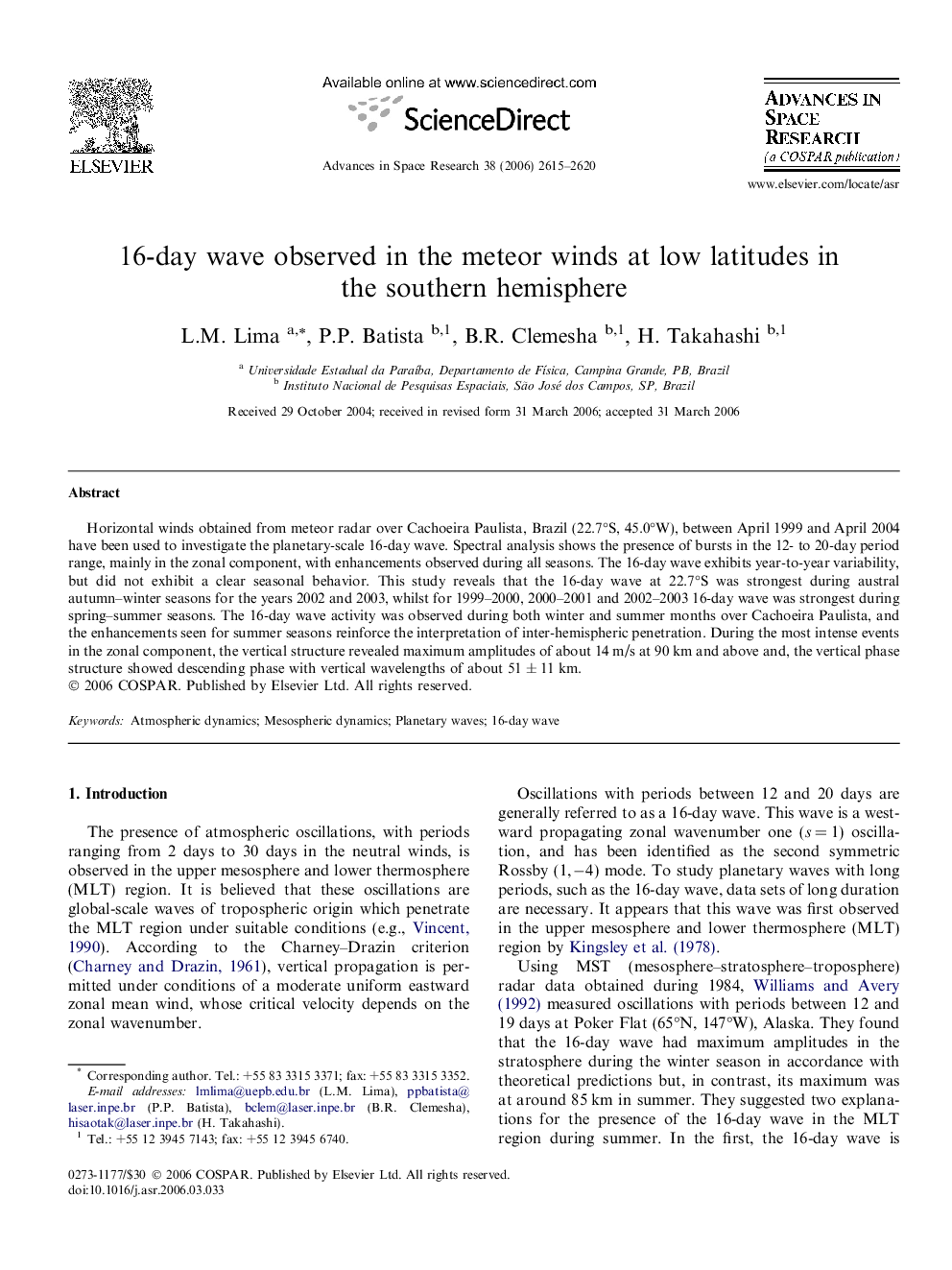| Article ID | Journal | Published Year | Pages | File Type |
|---|---|---|---|---|
| 1767718 | Advances in Space Research | 2006 | 6 Pages |
Abstract
Horizontal winds obtained from meteor radar over Cachoeira Paulista, Brazil (22.7°S, 45.0°W), between April 1999 and April 2004 have been used to investigate the planetary-scale 16-day wave. Spectral analysis shows the presence of bursts in the 12- to 20-day period range, mainly in the zonal component, with enhancements observed during all seasons. The 16-day wave exhibits year-to-year variability, but did not exhibit a clear seasonal behavior. This study reveals that the 16-day wave at 22.7°S was strongest during austral autumn-winter seasons for the years 2002 and 2003, whilst for 1999-2000, 2000-2001 and 2002-2003 16-day wave was strongest during spring-summer seasons. The 16-day wave activity was observed during both winter and summer months over Cachoeira Paulista, and the enhancements seen for summer seasons reinforce the interpretation of inter-hemispheric penetration. During the most intense events in the zonal component, the vertical structure revealed maximum amplitudes of about 14 m/s at 90 km and above and, the vertical phase structure showed descending phase with vertical wavelengths of about 51 ± 11 km.
Related Topics
Physical Sciences and Engineering
Earth and Planetary Sciences
Space and Planetary Science
Authors
L.M. Lima, P.P. Batista, B.R. Clemesha, H. Takahashi,
